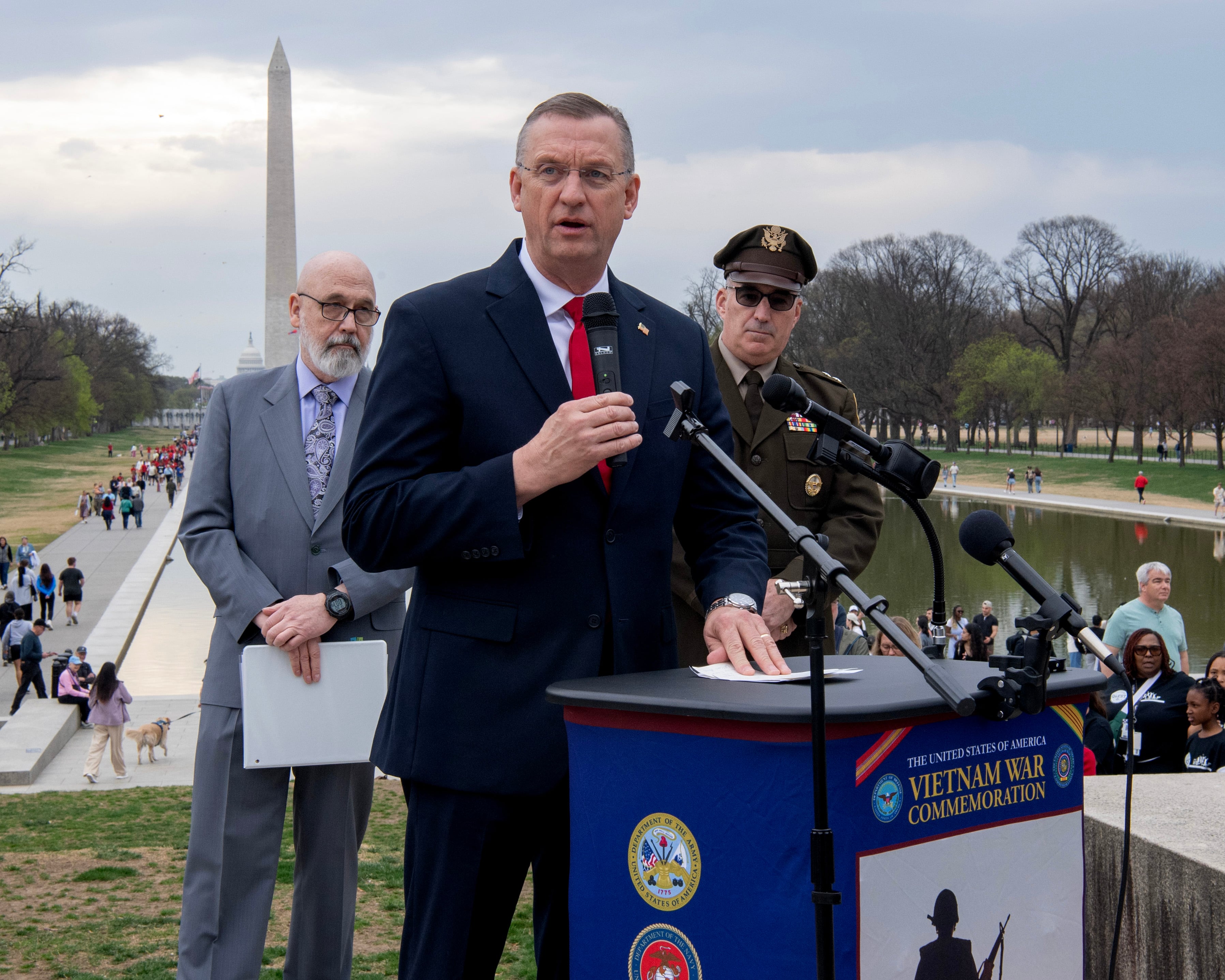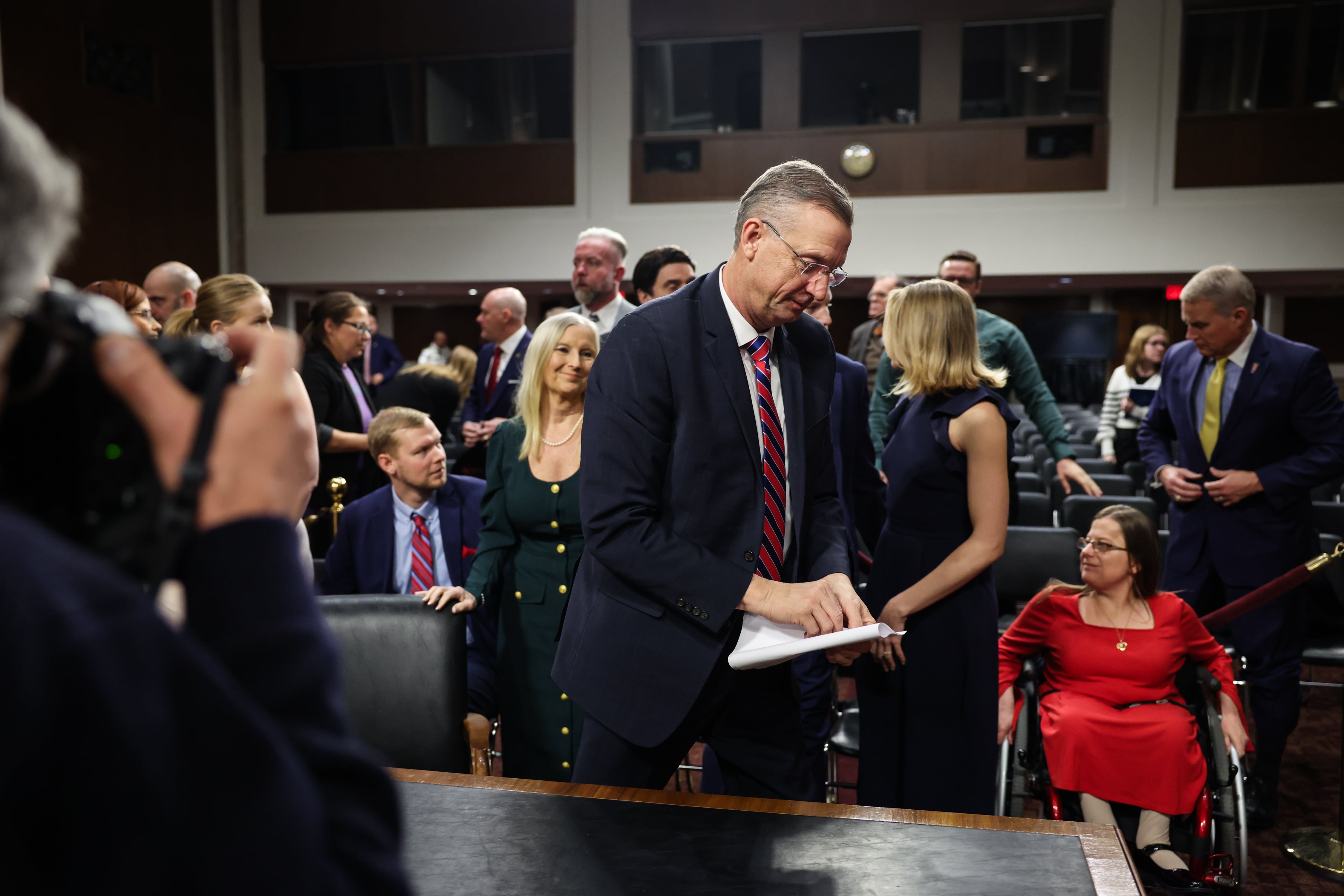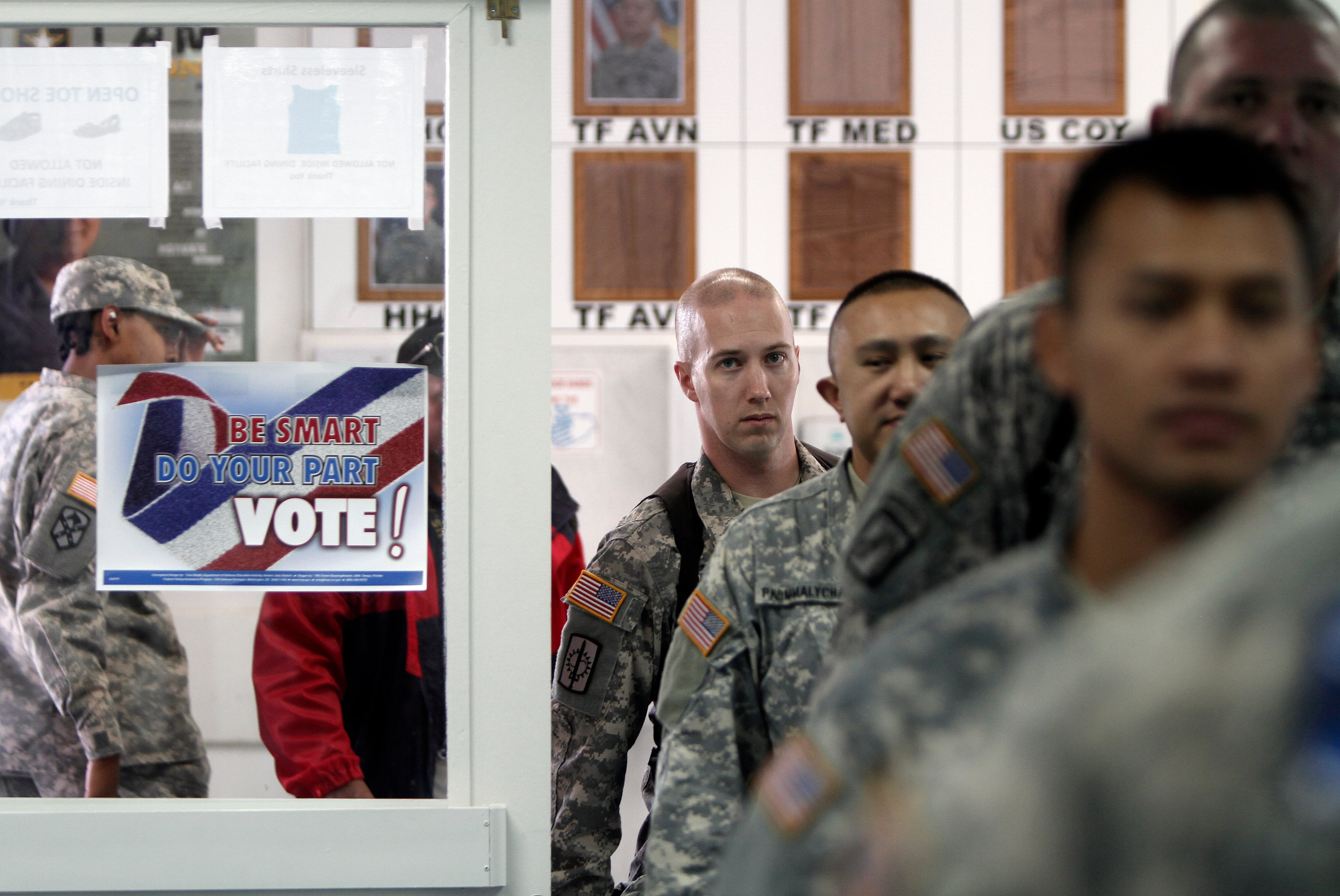WASHINGTON — It has become something of a ritual for U.S. presidents trying to demonstrate their resolve against North Korea’s ever-escalating aggression.
Beginning with Dwight Eisenhower’s visit to the front lines of wartime Korea, U.S. leaders have traveled to the barbed and mined demilitarized zone dividing the Korean Peninsula, peering across the barren north through binoculars, hearing broadcast propaganda, and reaffirming their commitment to standing with the South.
After leaving the possibility of the visit dangling, the White House announced definitively Tuesday that President Donald Trump would not be following in their footsteps and will be forgoing a visit to the DMZ as he sets out on his maiden Asia trip.
A senior administration official told reporters during a White House briefing that Trump will instead be visiting Camp Humphreys, a military base about 40 miles south of Seoul, to highlight the U.S.-South Korean partnership and South Korea’s burden-sharing. His tight schedule, officials said, wouldn’t accommodate both stops.
The official, who spoke on condition of anonymity to provide details ahead of the trip, noted that several Trump administration officials, including Defense Secretary Jim Mattis, Secretary of State Rex Tillerson and Vice President Mike Pence, had already made the trip to the border that has separated the North and South for 64 years.
Trump’s trip comes amid escalating tensions and rhetoric with North Korea, which has continued to pursue its missile and nuclear programs and ramped up its missile testing. In a recent speech at the United Nations, Trump said he would “totally destroy” the nation, if necessary. He has also derided North Korean leader Kim Jong Un as “little Rocket Man.” Kim has returned the favor, calling Trump a “mentally deranged U.S. dotard.”
The White House has played down the notion that its hesitation to send Trump to the DMZ stemmed from security concerns. But two people familiar with the administration’s thinking said that security issues had been discussed. The Secret Service, which advises on the president’s itinerary, did not immediately respond to a request for comment on its recommendations.
U.S. and South Korean officials also argued that a visit to Camp Humphreys, also known as United States Army Garrison-Humphreys, at the invitation of South Korean President Moon Jae-in, serves as a fitting symbol of the countries’ ties and South Korea’s commitment to contributing to its own defense — a theme the president often pressed during his campaign.
Some experts on the region also breathed a sigh of relief, arguing the trip could have further inflamed tensions between Trump and Kim.
“I would probably be begging him not to (go). No Secret Service likes to,” said Dean Cheng, a China expert with the Heritage Foundation. He said that, given the recent exchange of words between Kim and Trump, a visit was “probably more fraught with risk than your average presidential visit.”
Others pointed to the symbolism of the president’s visit to the base.
“To me it was a no-brainer that he should go to Humphreys, this new base that they’ve poured all this money into,” said Jim Schoff, a former Pentagon adviser on East Asia policy and now senior fellow in the Asia program at the Carnegie Endowment for International Peace.
Schoff said the base was “perfect” for Trump: “It’s a big, massive real estate project and it’s South Korean-funded. It’s the big story of the alliance in recent times and it’s a great opportunity to highlight that,” he said.
Troy Stangarone, a senior director at the Korea Economic Institute in Washington, agreed that, with the move of United States Forces Korea to Camp Humphreys almost complete, “a visit there sends a stronger signal about U.S. commitment to defend South Korea.” A trip to the DMZ , he said, “could instead be misinterpreted and raise tensions on the Korean peninsula.”
Visiting the wooded, craggy terrain inside the DMZ is like going back in time to 1953. In July of that year, the Korean War armistice agreement was signed at Panmunjom, the so-called “truce village” bisected by a marker that is the official dividing line between North and South Korea. This is the only area inside the DMZ where soldiers of North and South can stand nose to nose.
In 1983, Ronald Reagan became first U.S. president to enter the DMZ — with South Korean artillery gunners standing poised to fire if necessary to protect him — and every president, barring one, has made the trip since. Trump’s predecessor, Barack Obama, visited during a 2012 trip to Seoul and told troops stationed at the border that “the contrast between South Korea and North Korea could not be clearer, could not be starker, both in terms of freedom but also in terms of prosperity.”
In 1993, Bill Clinton stood closer to North Korean territory than any Western leader, walking out on the “Bridge of No Return” and looking through binoculars at North Koreans about 50 yards away.
He later recalled seeing young North Korean soldiers looking back at him and thinking: “I wish you could walk over this bridge and I hope it won’t be long until you can, until we put down the threat of nuclear war and open up the hand of friendship.”
Pence said his visit earlier this year let North Koreans “see our resolve in my face.”
But Evans Revere, a former senior State Department official for East Asia, said that he was disappointed by Trump’s decision. He said a visit would have helped the president understand the human toll of any potential military action and see for himself just how close Seoul is to the border.
“By not visiting the DMZ, President Trump can only remind our allies, once again, that he does not view our alliance commitments in the same way as did every one of his predecessors,” he said.
Associated Press National Security Writer Robert Burns contributed to this report.




